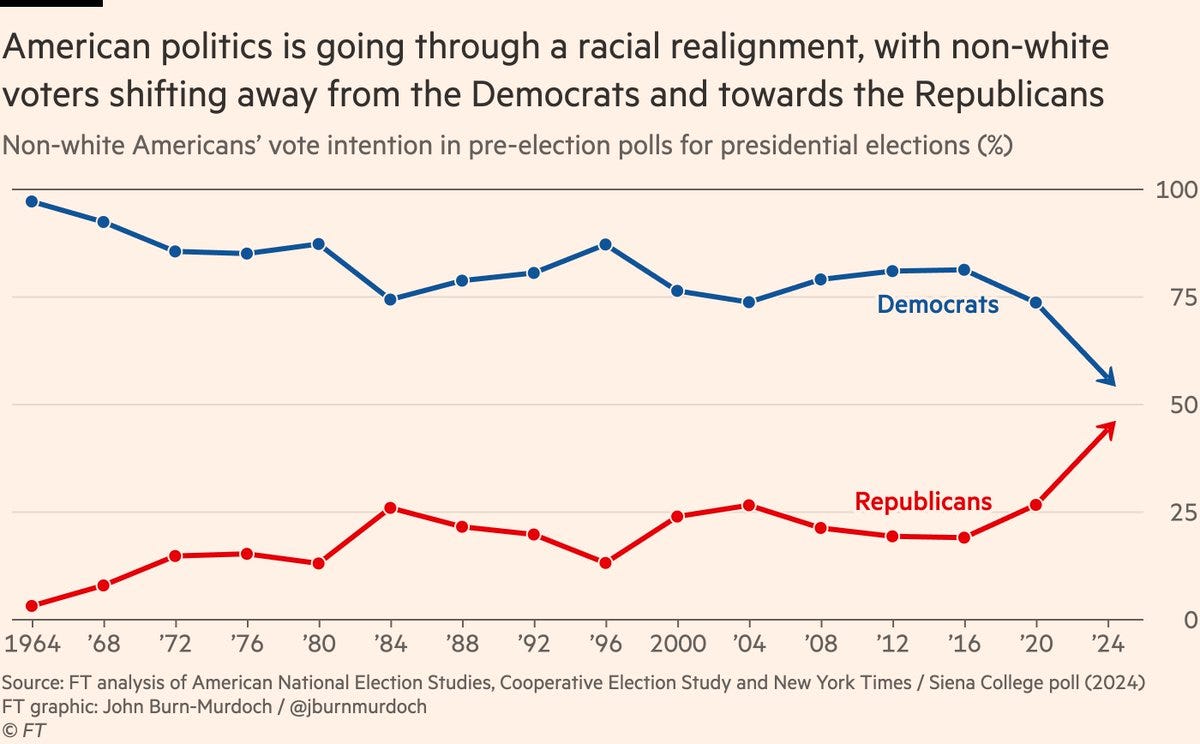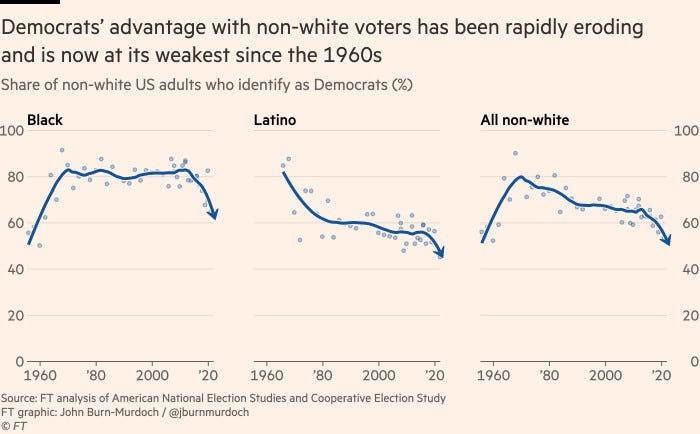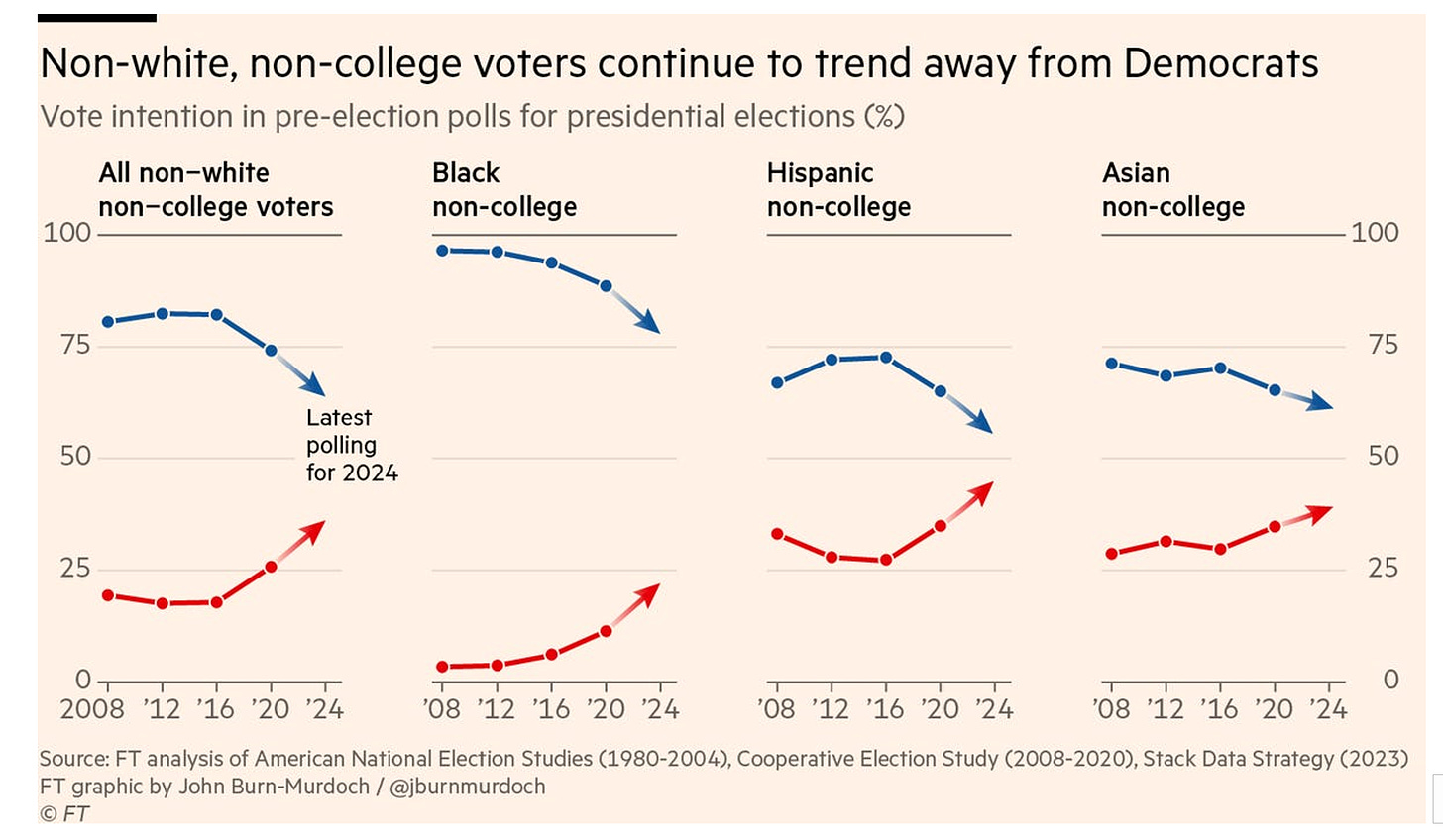So how does a Democratic U.S. Senator in a very red state run to keep his seat? Sen. Jon Tester provides the emblematic example in his bid to hold his senate seat in Montana. Stephen Neukam shares some observations at Axios: “Tester’s campaign in deep-red Montana could be the difference between Democrats keeping control of the Senate or relinquishing it to the GOP….Some of the earliest advertising from the Tester camp have elevated his splits with Biden, including an ad that said the Democrat “fought to stop President Biden from letting migrants stay in America instead of remain in Mexico.”….But Republicans are pouring money into the race and are painting Tester as a lawmaker who says one thing to Montanans and then acts differently in Washington….Another ad from early in the cycle highlights how Tester joined with Republicans to protect funding for gun safety and hunter education classes….He has also made recent moves on Capitol Hill to differ from Biden, including pushing the president to take action at the southern border and opposing new energy regulations.…National Republican Senatorial Committee communications director Mike Berg told Axios that Tester’s distance from Trump would be “at the center” of the campaign against the Democrat….Tester also notably voted to convict Trump in both of his impeachments….Tester, along with Sen. Sherrod Brown (D-Ohio), are two of the only Democrats running for Senate this year who have been so openly critical of the White House on the campaign trail…The Tester campaign told Axios the lawmaker has “worked with President Trump and Republicans to help veterans, crack down on government waste and abuse, and support our first responders.”….”He stood up to President Biden by demanding action be taken to secure our border and protect Montana’s way of life,” Monica Robinson, a Tester campaign spokesperson, said.” It is one of the many ironies of American politics that Tester, who is fighting to keep his Senate seat, might make a strong presidential candidate, who could pull from moderates and conservatives, as well as liberals.
Almost every political observer will tell you that Pennsylvania is a top swing state in the 2024 presidential and U.S. Senate elections. Some of the results of Tuesday’s PA primary elections may shed a bit of light on how Democratic campaigns are doing: 538’s stable of writers offer some clues at ABC News: Geoffrey Skelley, Kaleigh Rogers and Monica Potts write that “In the solidly blue 12th District, ABC News reports progressive Democratic Rep. Summer Lee is projected to defeat Edgewood Borough Council member Bhavini Patel by about 20 percentage points, with 99 percent of the expected vote reporting. Lee’s win is an early indication that The Squad’s criticisms of Israel won’t necessarily weigh members down in the primaries to come this summer….Meanwhile, in the 10th District, former news anchor Janelle Stelson is projected to win the Democratic primary with 44 percent against a field of five other candidates and 99 percent of the expected vote, ABC News reports. She’ll face Republican Rep. Scott Perry, a former chair of the hard-right House Freedom Caucus, in a slightly GOP-leaning seat that may be competitive….In the 1st District, another seat that could be in play, Republican Rep. Brian Fitzpatrick held off a challenge from the right in anti-abortion activist Mark Houck, leading by 26 points at this point with 91 percent of the expected vote. ABC News reports that Fitzpatrick is projected to win that race. Fitzpatrick will now face off against Democrat Ashley Ehasz, whom he defeated by 10 points in 2022, but it may very well be a closer race in this swingy district this time around….And over in Eastern Pennsylvania, three Republicans squared off tonight for the opportunity to run against — and potentially unseat — three-term Democratic Rep. Susan Wild in the 7th District. But it was state Rep. Brian Mackenzie who came out on top and is projected to win according to reporting by ABC News. He’s currently leading with 42 percent of the vote, and 85 percent of the expected vote reporting, perhaps in part thanks to the nearly half a million dollars spent on his behalf by the Koch Brothers’ PAC. Mackenzie and Wild will now be gearing up for a tight race that is set to be one of the most competitive House races in the nation, so expect a lot of attention — and money — to be paid to Lehigh Valley….Neither candidate faced primary opposition in the U.S. Senate contest today, meaning that Democratic Sen. Bob Casey Jr. and former hedge fund CEO Dave McCormick will face off in November.”
Skelley, Rogers and Potts explain further: “Finally, in notable races for the state House and Senate, we watched Democratic primaries in the Philadelphia and Pittsburgh areas — which will set up key contests this fall, as Democrats fight to hold onto their narrow, one-vote majority in the state House and flip the Senate to secure a state government trifecta. Incumbents mostly fended off challenges from more progressive candidates in these races, notably Rep. Amen Brown in West Philadelphia, and Rep. Abigail Salisbury, who won against a Summer Lee-backed candidate, Ashley Comans.” ….Monica Potts shares this addendum: “As Meredith said, I think the big takeaway for the night is that Republicans did not nominate some of their more extreme candidates. That was a losing strategy in 2022, and we may see more competitive statewide races as a result this fall….The 1st District race I noted earlier is a good example: Anti-abortion Republicans suffered a notable loss with Houck’s decisive defeat in favor of incumbent Fitzpatrick, one of the most moderate Republicans in the U.S. House. So far, abortion has been a winning issue for Democrats, and it’s likely to be a defining issue in the race this fall — so Republicans are likely glad Fitzpatrick prevailed in this purple district.” Potts is surely right that abortion politics is the big story in Pennsylvania, which is one of the most heavily Catholic states. And if Tuesday’s primary election results indicate anything significant for the fall presidential election, it is that reproductive freedom still looks like a potent issue favoring Democrats — in what may be the largest electoral vote swing state on the map in 2024.
The United Auto Workers historic victory in organizing the Chattanooga, TN Volkswagen auto plant is not only an earthquake for labor news; it bodes well for Democrats, who could benefit immeasurably from a significant uptick in union membership. Unions not only contribute significant funds to Democratic campaigns; they also provide needed manpower when it comes to GOTV and they help build political solidarity between workers of different races and cultures. At The American Prospect, Editor at Large Harold Meyerson offers some insights on the importance of the UAW victory: “History—good history, if conditional history—was made last Friday in Chattanooga, as workers at Volkswagen’s factory there voted to join the United Auto Workers by an overwhelming margin of 2,628 to 985, a 73 percent to 27 percent landslide….The vote was historic on any number of counts. It marks the UAW’s first successful unionization of a foreign-owned auto factory after a number of failed attempts; it marks the first unionization in many decades of a major group of workers in the non-union South; it may even mark the rebirth of a powerful union movement, something the nation has lacked over the past 40 years….It also marks, alongside the provisional victory of the Starbucks baristas, a breakthrough in the type of occupation that’s been able to unionize. In recent years, there’s been a wave of unionizations among university teaching assistants, interns and residents, museum docents, and other workers who can’t readily be replaced should management fire them for their pro-union proclivities. But it’s been standard practice for management to fire assembly-line workers, retail clerks, drywall installers, and the myriad of other workers for whom replacements can indeed be found if and when they threaten to unionize. It’s illegal for employers to do that, but the penalties are so negligible (restoring those workers to their jobs after months or years of litigation, giving them their back pay, and posting a notice of this settlement somewhere in the workplace) that it’s long been standard practice in American business. The VW and Starbucks workers had that sword hanging over their heads, yet managed to prevail nonetheless. Should their example inspire the millions of workers who’d like to unionize but fear employers’ retaliation, that would mark a sea change in America’s political economy….The historic status of the victory at Volkswagen, however, is still as yet conditional. To really mark a historic break with nearly 60 years of union decline—a decline that is at the root of the erosion of the New Deal’s egalitarian economics and, correspondingly, the rise of record levels of economic inequality—it can’t be a one-off. The UAW has to roll this on to other Southern foreign-transplant factories; the first test of its ability to do that will come the week of May 13, when workers at the Mercedes factory in Vance, Alabama, will also vote on whether to join the UAW….As Mike Elk noted in a report from Chattanooga that we ran on Friday, the workers at the VW plant are a younger and more racially diverse group than those who voted down previous attempts to go union. The teaching assistants, baristas, and now autoworkers who’ve voted to go union in the past couple of years come disproportionately from, by the evidence of multiple polls, the most pro-union generation that this country may have ever seen.”











